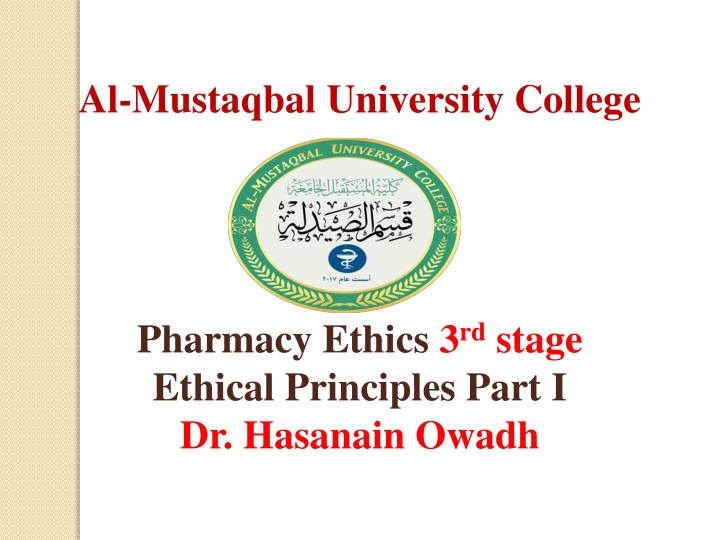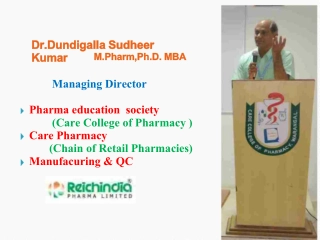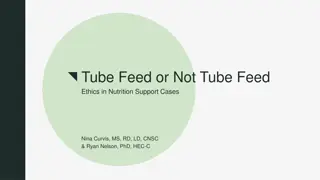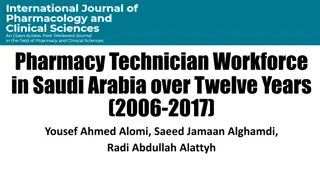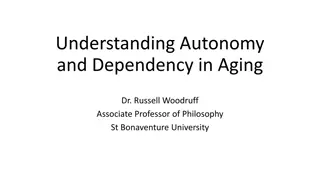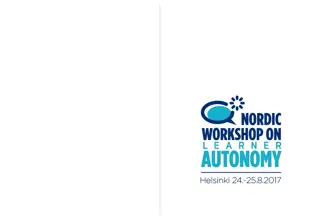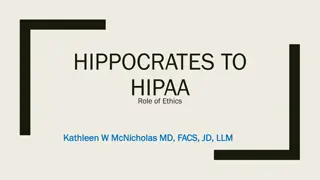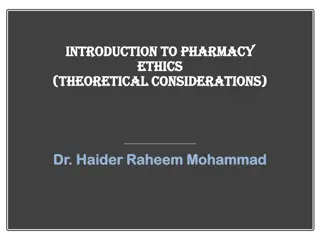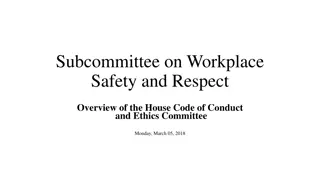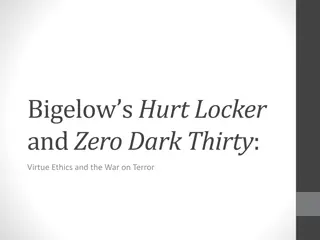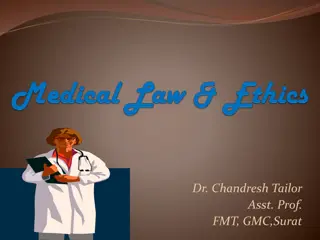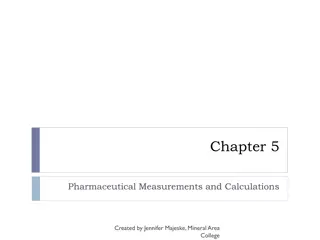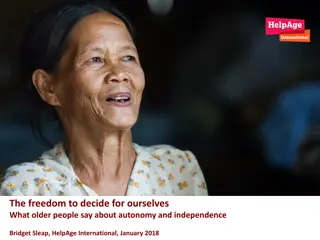Pharmacy Ethics - Autonomy and Nonmaleficence Principles
In the field of pharmacy ethics, understanding the principles of autonomy and nonmaleficence is crucial. Autonomy emphasizes the right of patients to make decisions about their own healthcare, even if healthcare providers may not agree. On the other hand, nonmaleficence requires pharmacists to ensure that no harm is done to patients, intentionally or unintentionally. These principles guide ethical decision-making in pharmacy practice, balancing patient autonomy with the duty to avoid causing harm.
Download Presentation

Please find below an Image/Link to download the presentation.
The content on the website is provided AS IS for your information and personal use only. It may not be sold, licensed, or shared on other websites without obtaining consent from the author.If you encounter any issues during the download, it is possible that the publisher has removed the file from their server.
You are allowed to download the files provided on this website for personal or commercial use, subject to the condition that they are used lawfully. All files are the property of their respective owners.
The content on the website is provided AS IS for your information and personal use only. It may not be sold, licensed, or shared on other websites without obtaining consent from the author.
E N D
Presentation Transcript
Al-Mustaqbal University College Pharmacy Ethics 3rd stage Ethical Principles Part I Dr. Hasanain Owadh
Ethical Principles Autonomy Nonmaleficence Beneficence Justice Fidelity Confidentiality Veracity Accountability
Autonomy The freedom to make decisions about oneself The right to self-determination Healthcare providers need to respect patient s rights to make choices about healthcare, even if the healthcare providers do not agree with the patient s decision.
Why is Autonomy Important? Autonomy is important because we need to make sure that the patient is actively involved in their diagnosis and treatment
Autonomy Example A 26-year-old male has been involved in a high-speed collision, in which he sustained blunt force trauma to his head as his head hit the front windscreen of his car. He did not lose consciousness; he is fully responsive and has no indications of neurological damage. He does, however, have a significant head wound that is bleeding continuously. This patient has refused treatment on the grounds that he feels fine and is refusing to have sutures to close his head wound. He would like to leave the department.
Ethical dealing Even though the best interests of this patient would be served by undergoing a CT scan and having sutures, he is an adult with full mental capacity, and so we must respect his autonomy in choosing to leave the department. We cannot prevent him from leaving, and if we did it would be unlawful detainment.
Nonmaleficence Requires that no harm be caused to an individual, either unintentionally or intentionally This principle requires pharmacist to protect individuals who are unable to protect themselves. Make sure that the treatment does not harm the patient or others in society.
Nonmaleficence When interventions undertaken by pharmacists create a positive outcome while also potentially doing harm it is known as the "double effect." Eg,. the use of morphine in the dying patient. eases pain and suffering while hastening the demise through suppression of the respiratory system.
Beneficence This principle means doing good for others The practitioner should act in the best interest of the patient - the procedure be provided with the intent of doing good to the patient. Patient s welfare is the first consideration. Pharmacists need to assist clients in meeting all their needs Biological Psychological Social
Non-Maleficence Example A 52-year-old man collapses in the street complaining of severe acute pain in his right abdomen. A surgeon happens to be passing and examines the man, suspecting that he is on the brink of rupturing his appendix. The surgeon decides the best course of action is to remove the appendix in situ, using his trusty pen- knife.
Non-Maleficence Example From a beneficence perspective, successful removal of the appendix in situ would certainly improve the patient s life. But from a non-maleficence perspective, let s examine the potential harms to the patient: The environment is unlikely to be sterile and so the risk of infection is extremely high
Non-Maleficence Example The surgeon has no other clinical staff available or surgical equipment meaning that the chances of a successful operation are already lower than in normal circumstances. Assuming that the surgeon has performed an appendectomy before, they have almost certainly never done it at the roadside. Unless there isn t a hospital around for miles, this is an incredibly disproportionate intervention.
Justice Every individual must be treated equally This requires pharmacist to be fair. Fair and equal distribution of health resources, and the decision of who gets what treatment. The benefits of new or experimental treatments must be distributed equally among all groups in society.
Justice Example Patients suspected of having cancer are prioritised within the national health system, with the maximum waiting time for referral being two weeks (as opposed to 18 weeks for non-urgent referrals). Patients diagnosed with cancer are entitled to a range of treatments including radio- and chemotherapy. These expensive and treat a small, but significant proportion of patients. treatments are
Justice Example This raises a couple of dilemmas for justice, and it s important you can think of arguments on both sides of the issue. For example: It could be argued that prioritising cancer patients means you re limiting the ability of other patients to access healthcare
Justice Example It could also be argued that spending public money on radio- and chemotherapy on a smaller group of people is taking budget away from less expensive treatments that would benefit a greater number of people for example, an increase in statins for those at risk of cardiovascular disease A counter-argument would be that early treatment increases survival rates and actually reduces the cost of cancer treatment
References: -Robert J. Pharmaceutical Care Practice: The Clinician's Guide, 2nd Edition. - Internet search.
